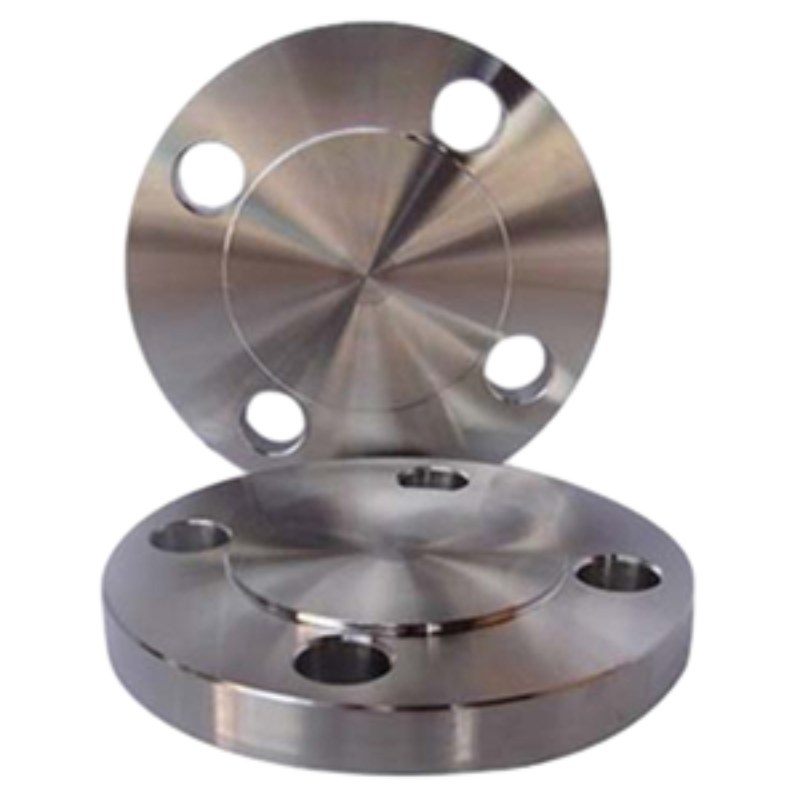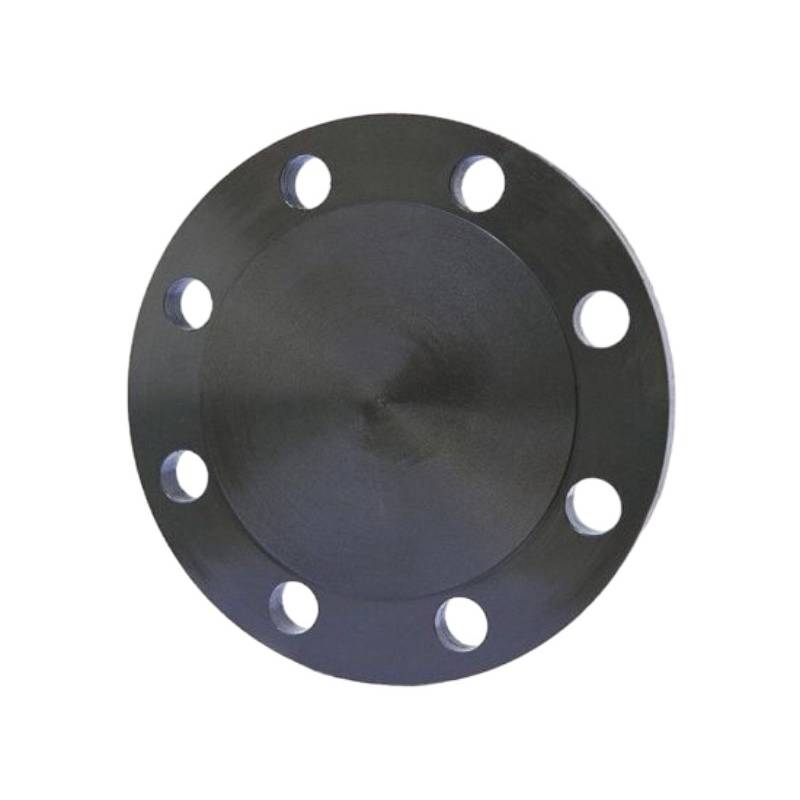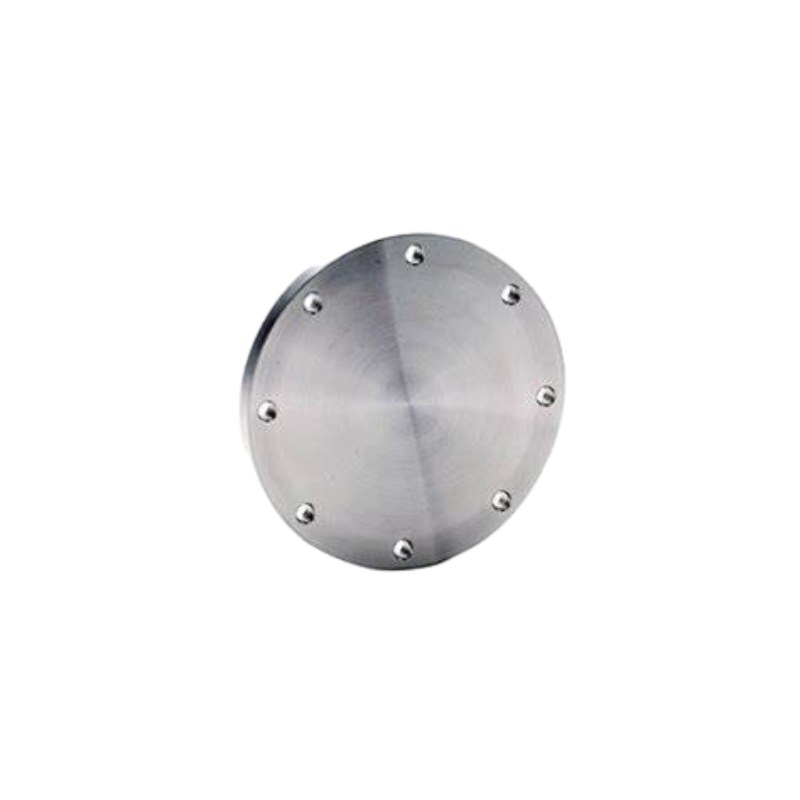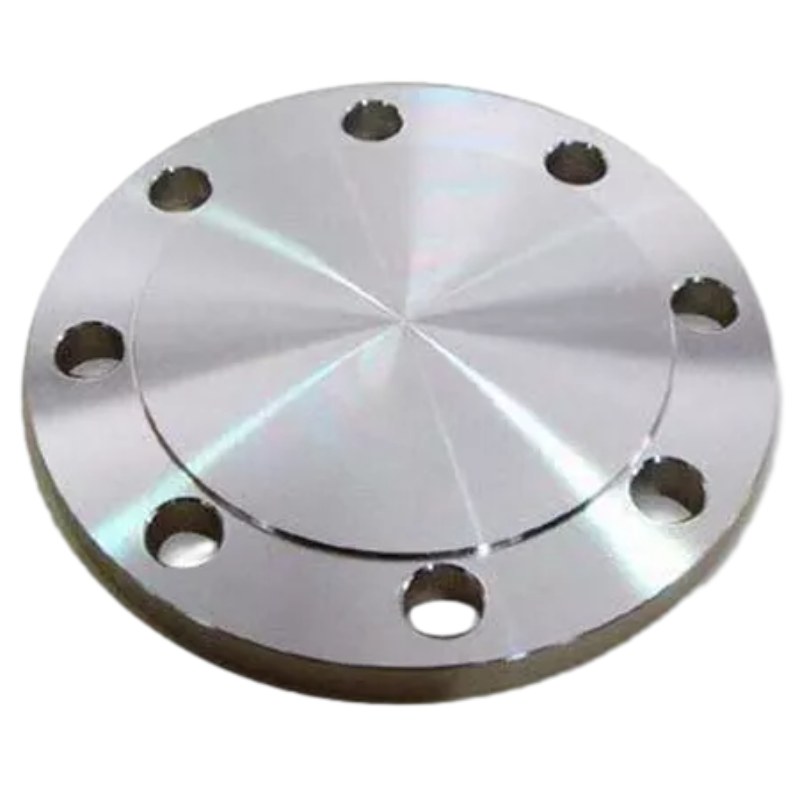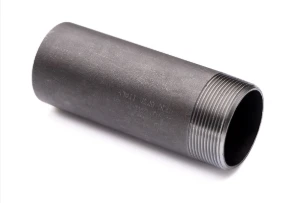-
Ubunifu Imara: GOST 12836-67 Blind Flange ina sahani ya gorofa, ya mviringo yenye mashimo ya bolt yaliyo na nafasi sawa karibu na mzunguko. Muundo huu unaruhusu upangaji rahisi na kufunga kwa flange ya kupandisha, kutoa suluhisho thabiti na thabiti la kufungwa kwa mifumo ya bomba.
-
Kuweka Muhuri kwa Usalama: Inapowekwa kwenye mwisho wa bomba, uso wa gorofa wa GOST 12836-67 Blind Flange huunda muhuri mkali, kuzuia kuvuja kwa maji na kudumisha uadilifu wa mfumo wa bomba. Uwezo huu wa kuziba salama huhakikisha utendakazi na usalama bora, hata chini ya hali mbaya ya uendeshaji.
-
Utumizi Mengi: Kuanzia viwanda vya kusafisha mafuta na gesi hadi mitambo ya kuchakata kemikali na mitandao ya usambazaji maji, GOST 12836-67 Blind Flanges hupata matumizi mengi katika tasnia mbalimbali. Iwe inatumika kwa madhumuni ya kutengwa, kupima shinikizo, au kufungwa kwa muda, flanges hizi hutoa uaminifu na uimara katika mifumo muhimu ya mabomba.
-
Ujenzi wa kudumu: Imeundwa kwa nyenzo za ubora wa juu kama vile chuma cha kaboni, chuma cha pua au aloi, GOST 12836-67 Blind Flanges huonyesha nguvu na uimara wa kipekee. Zimeundwa kustahimili hali mbaya ya uendeshaji, ikijumuisha mazingira ya kutu, halijoto ya juu, na shinikizo kubwa, kuhakikisha utendakazi wa muda mrefu na kutegemewa.
-
Uhandisi wa Usahihi: GOST 12836-67 Flanges Blind hupitia michakato ya usahihi ya machining na uhandisi ili kukidhi uvumilivu mkali wa dimensional na mahitaji ya kumaliza uso. Usahihi huu huhakikisha upatanifu na ubadilishanaji na vijiti vingine vya kawaida, kuwezesha ujumuishaji usio na mshono katika mifumo ya mabomba na kupunguza hatari ya uvujaji au kushindwa.
-
Urahisi wa Ufungaji: Kufunga GOST 12836-67 Blind Flanges ni ya ufanisi na ya moja kwa moja, inayohitaji usawa rahisi na bolting hadi mwisho wa bomba. Vipimo na muundo wao sanifu huwezesha ujumuishaji rahisi katika mitandao iliyopo ya mabomba, kupunguza muda wa usakinishaji na gharama za kazi.
Sifa Muhimu:
- Ubunifu thabiti wa kufungwa kwa usalama
- Kufunga kwa usalama kwa muundo wa uso wa gorofa
- Maombi anuwai katika tasnia
- Ujenzi wa kudumu kwa utendaji wa muda mrefu
- Uhandisi wa usahihi kwa uvumilivu mkali
- Urahisi wa ufungaji na usawazishaji rahisi na bolting
Material Selection for GOST 12836-67 Blind Flanges: What You Need to Know
When it comes to GOST 12836-67 blind flanges, selecting the appropriate material is crucial for ensuring functionality, safety, and longevity in various applications. GOST standards, established by the Euro-Asian Council for Standardization, Metrology and Certification, guide the specification of materials to maintain the integrity of piping systems.
Key Considerations for Material Selection:
1. Corrosion Resistance: One of the primary factors in choosing a material for GOST blind flanges is its ability to resist corrosion. Stainless steel (such as 304, and 316) is a popular choice due to its excellent resistance to oxidizing environments. For applications involving aggressive chemicals, alloys like Inconel or Monel are often considered.
2. Pressure and Temperature Rating: GOST blind flanges need to be rated for the specific pressure and temperature conditions they will face. Material selection must align with the service conditions to avoid failure. For high-pressure applications, carbon steel flanges can be suitable, provided they are properly treated or coated.
3. Weldability and Machinability: Depending on installation requirements, the selected material should offer appropriate weldability and machinability. If modifications or on-site fabrication are necessary, choosing materials that can be easily welded is essential.
4. Standards Compliance: Ensure that the materials selected comply with all relevant GOST standards. This not only guarantees quality but also maintains compatibility within the piping system.
5. Cost-effectiveness: While material selection should prioritize performance and safety, cost considerations also play a significant role, especially in large-scale projects. Finding a balance between budget and quality is essential.
Differences Between GOST 12836-67 Blind Flange and Other Flange Standards
When comparing the GOST 12836-67 blind flange with other flange standards, several key differences emerge that reflect the unique characteristics and applications of the Russian standard. The GOST (Gosudarstvennyy Standart) system is a set of regulations and guidelines that govern various industrial products, including blind flanges, which are used to seal off piping systems.
One of the primary differences lies in the dimension and pressure rating classifications. GOST 12836-67 blind flanges are specifically designed according to Russian specifications, with dimensions that may differ significantly from those outlined in ANSI, ASME, or ISO standards. For instance, while ANSI/ASME flanges are typically categorized into nominal pipe sizes (NPS) and pressure classes, GOST flanges feature a unique set of sizes and pressure ratings, making it essential for engineers to select the appropriate type based on regional standards.
Another notable difference is the material composition. The GOST standard emphasizes the use of specific materials that are suited for the harsh Russian climate and industrial requirements. While common materials such as carbon steel and stainless steel are also used in other standards, GOST may specify additional material grades to accommodate unique environmental challenges, including extreme temperatures and corrosive conditions.
Additionally, the manufacturing and testing processes for GOST 12836-67 blind flanges are subject to local industry regulations, which might include stricter quality assurance protocols compared to other international standards. This ensures that the flanges not only meet dimensional specifications but also effectively withstand the pressures and temperatures expected in typical applications within Russia.
In summary, while GOST 12836-67 blind flanges share similarities with other flange standards, their unique dimensions, material requirements, and quality assurance processes set them apart. Understanding these differences is crucial for engineers and designers when selecting flanges for specific applications in diverse geographical locations.







